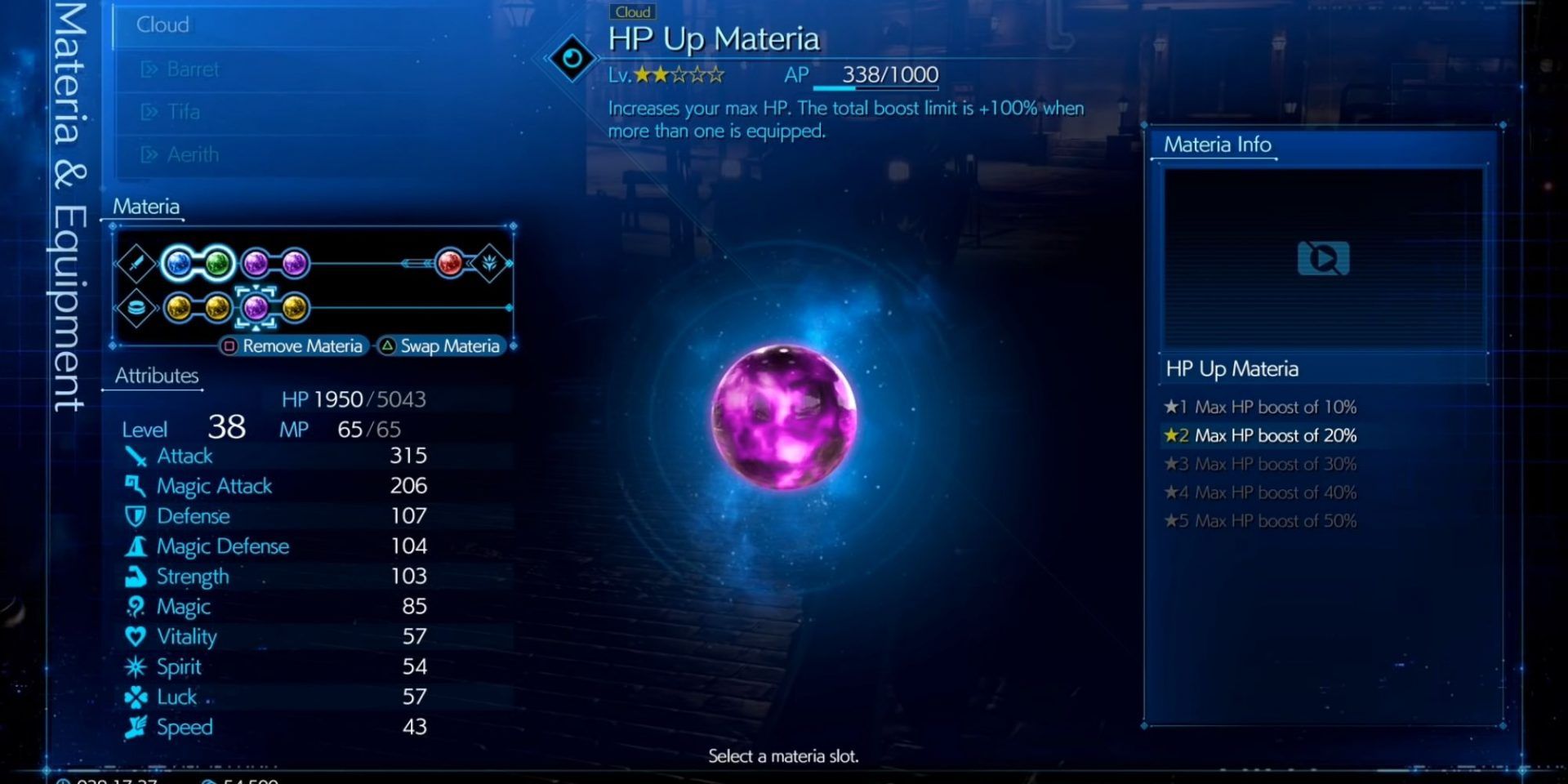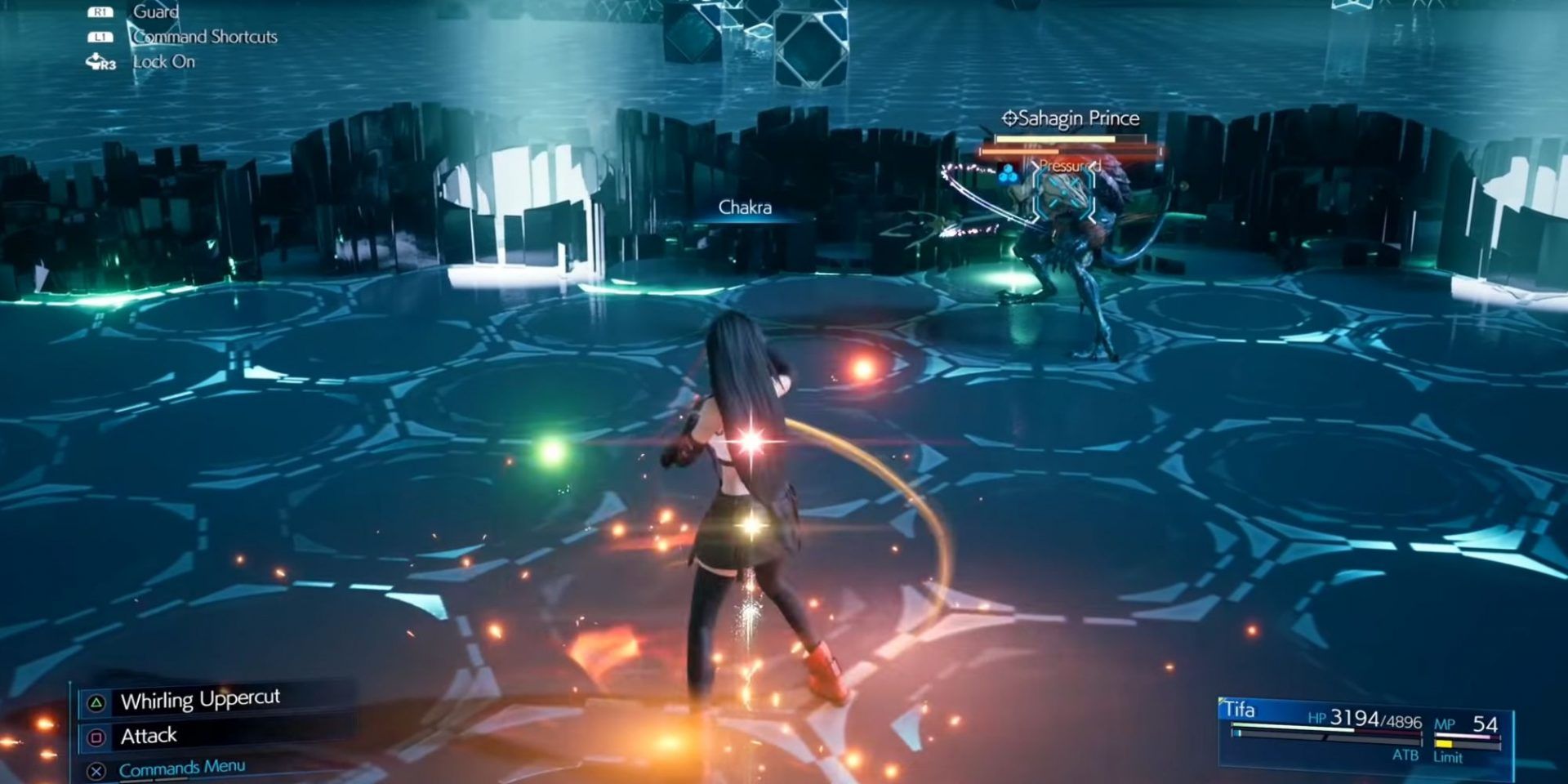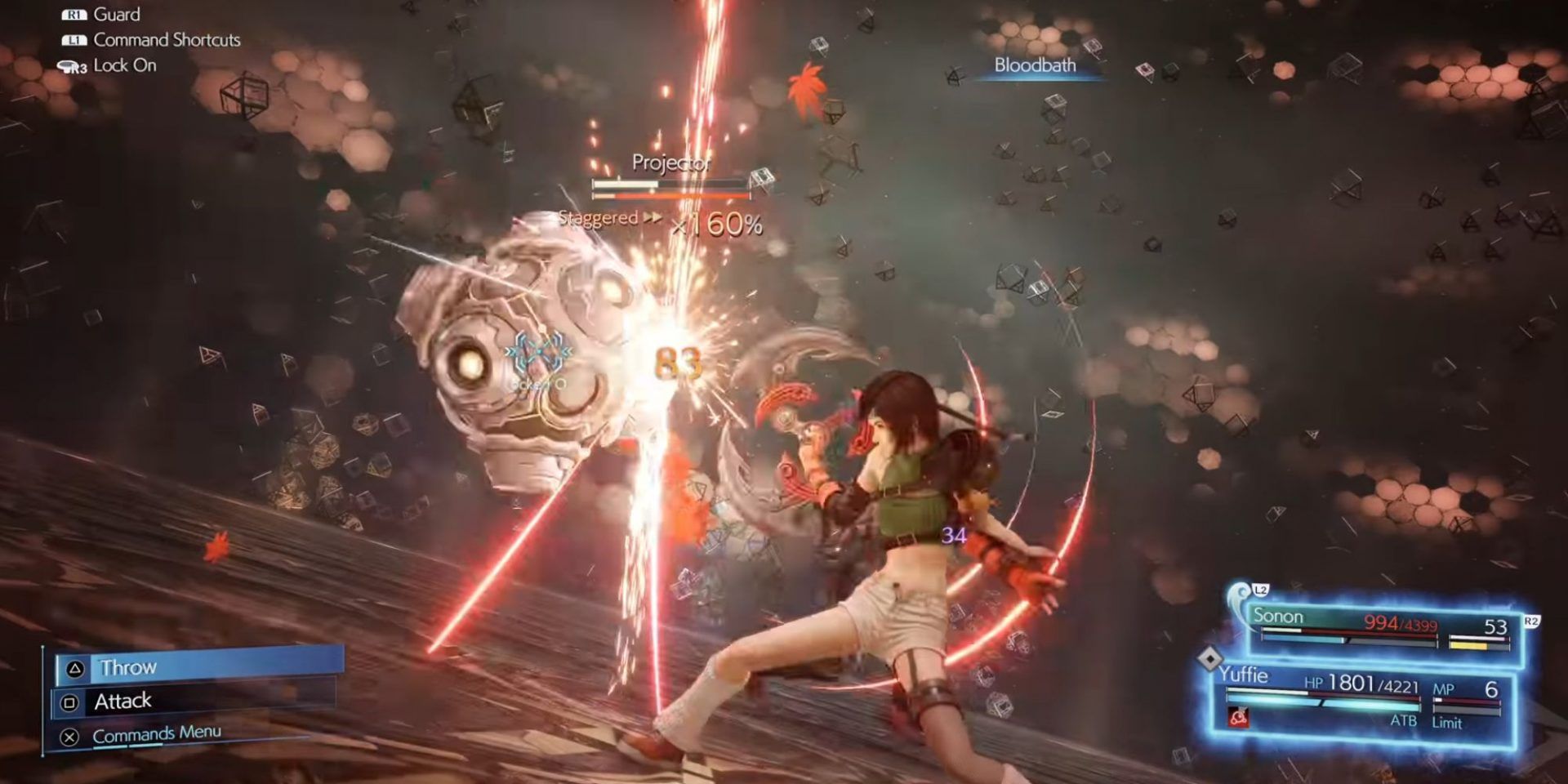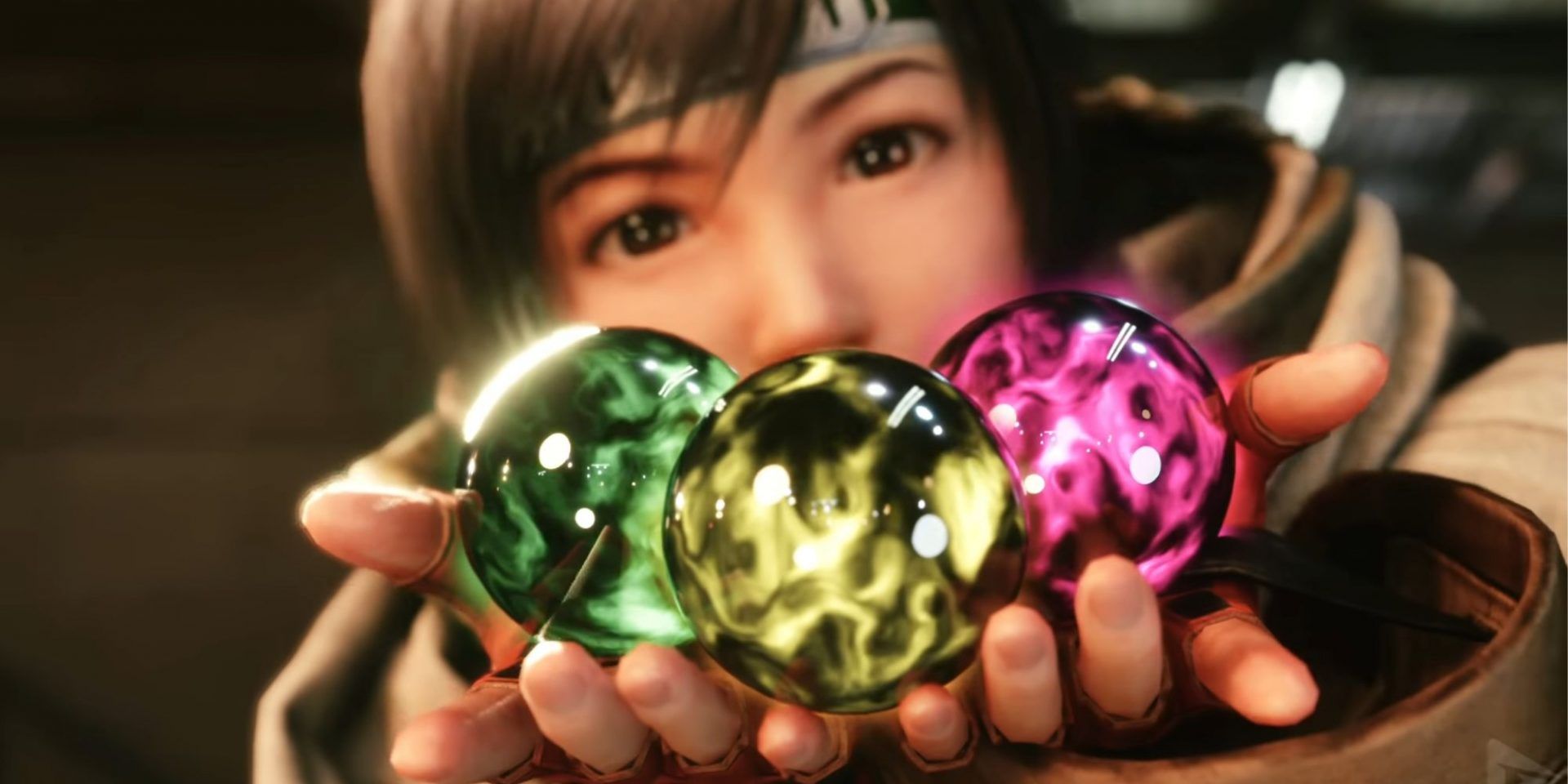Sephiroth, the enigmatic antagonist of Final Fantasy VII describes Materia, the primary ability system of the game, as a substance that holds the knowledge and wisdom of the Ancients. Anyone with this knowledge can freely unlock their inner connection with the land and planet, and call up magic. These words truly describe what the Materia system is all about: magical and endless freedom.
Materia functions like the usual character or job classes in other Final Fantasy games. They come in different types, which are indicated by their color and class. The main five types can be equipped to any character you choose, giving them access to various spells and abilities, in addition to stat increases and support functions that act in resonance with other Materia and base character stats to give you an even stronger edge in battles.
The Materia system is widely celebrated for its endless customization options, giving players the ability to mix and match Materia as they desire to create their preferred character builds. When this system was implemented into Final Fantasy VII's remake, it proved it could withstand the test of time. Despite being implemented with some new elements, the overall structure felt the same and was just as refreshing as the original.
Even during the PlayStation 1 era, the Materia system showed us that it had respect for players’ time and effort. Once you get your hands on a Materia, it will include the spell with all its required evolutions and upgrades. You only needed to equip them and evolve them as you kept going into battles. You did not have to look in hidden chests or grind skill points to acquire new abilities. You were able to focus 100% of your attention on enjoying the game itself.
That’s the most important and distinctive trait Materia has, it doesn’t lock skills or upgrades behind imaginary walls. There is an instant feeling of gratification when you can acquire the ability and are able to use it straight away, and the more you use it, the better it gets. In normal skill trees like Final Fantasy X’s sphere grid, you still had to build your characters in a certain way and compromise with your limited available points, but here you don’t compromise for anything.
Another aspect of this system is that it allowed for more varied and intuitive choices in dungeon designs. Most games lock upgrades and abilities in the beginning to facilitate a gradual increase in difficulty and enemy variety. This actually impacts the enemy variety negatively, as they are toned down to accommodate your limited starting choices and ability sets. You don’t get to enjoy what the game could truly offer until it’s too late to do so.
In Final Fantasy VII, this is not the case at all. The ability to change your Materia and your character build on the fly has allowed for clever enemy placement and a variety of encounters no matter where you are or your progress in the story. The encounters in each location didn’t have to be fitted into a certain theme or an elemental class, as every character could use multiple abilities and elemental spells if they are equipped with the right Materia.
The thing that also gave Materia some weight and substance was that the concept itself was an integral part of the game lore. The origin of the Materia itself is ambiguous, and there are intentional gaps in the story in order to facilitate crafting and finding more Materia, and also building plot twists around them. Examples of this include the Artificial Materia produced by the Shinra company in the original game, The Goddess Materia in Crisis Core, and Unique Materia such as White and Black ones, which there is only one copy of each in the whole world.
The Materia itself is labeled as part of the lifestream or the lifeforce of the planet, and so, the remake has made use of this concept to give life to the weapons you can acquire, and imbue them with separate skill trees that act in resonance with the concept of Materia. Each weapon in the game can unlock multiple Materia slots, and different abilities related to their Core Materia. It is also another way to reward you for the time you spend with the game.
Materia is a very versatile concept, and in Final Fantasy 7 Crisis Core, you could even fuse Materia to create a new Materia piece. Not only are you free to choose what you can do with them, but it felt as though you were always engaging with the ability system the game provided. You do not neglect the systems of the game until you get new points to invest in them, but instead, you are always on the look for new abilities or combinations to experiment with.
All of this enabled the Materia to become one of the most appreciated gameplay mechanics in the history of JRPGs. The reason is that it is all about giving to the players, instead of taking from them. You can still acquire more powerful Materia later on, like debuff Materia or Revival Materia, but their power relies on how they can fit into your builds and combos, instead of making you feel that you were missing something very crucial.
It also helped create some unexpected plot twists with certain characters, either by removing or adding certain characters for story reasons, but without the usual downside of wrecking your party setup with unexpected changes. Even if your main hard hitters become unavailable for any reason, you can still try and make the remaining ones suitable for any unforeseen circumstances.
The Materia system is an all-purpose gameplay element that can influence every facet of the story in a positive way, and through adding more challenges like boss encounters and new locations, or changing the narrative style as the remake tries to do, a lot of new possibilities and challenges will be available to the players in a natural way.





